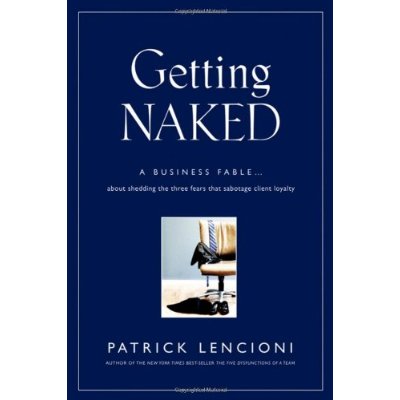Dropping the Fear of Being Naked
 Last week, we discussed getting naked with our clients by being humble and real with them as we work together to create value for each other. This usually has roadblocks associated with it, by what Patrick Lencioni calls the three fears. They are the fear of losing the business, the fear of being embarrassed, and the fear of feeling inferior. Let’s discuss each one separately.
Last week, we discussed getting naked with our clients by being humble and real with them as we work together to create value for each other. This usually has roadblocks associated with it, by what Patrick Lencioni calls the three fears. They are the fear of losing the business, the fear of being embarrassed, and the fear of feeling inferior. Let’s discuss each one separately.
The fear of losing the business happens when fear prevents us from doing the difficult things that will actually keep the business – creating greater loyalty and trust with our clients. What people really want to know is that we are putting the highest priority on helping them over trying to make money. We lose their trust and respect when do something, or fail to do something, just to increase or maintain the business. When we get naked with a client, we are open to the possibility of losing the client, not being paid, or the client taking our ideas and not compensating us. This exposure actually builds trust and opens us to goodwill that we will generate if even in the short term it doesn’t look like it.
The fear of being embarrassed happens when we don’t want to look stupid or unknowing in front of others that are paying us to be knowledgeable. This happens even when we are afraid to ask a question because we may look less than if it seems everyone else knows the answer. The truth is, a lot of the time others don’t know and we are respected for asking the question. Lencioni says that this is rooted in pride and is about avoiding the appearance of ignorance. The naked service provider asks questions at the expense of getting laughed at, to make sure he or she is helping the client. They admit and even celebrate their lack of knowledge, because a cover-up is only protecting their intellectual ego and not helping the client.
The fear of being inferior is also about the ego, but is different in that it is about protecting the aspects of feeling important and our social standing relative to a client. Lencioni says, “It is completely natural for a service provider to yearn for respect and admiration, and have a disdain for being overlooked, condescended to, or treated as thought we are inferior.” We try to preserve this stature that is created in society by being the know-it-all and being above others in some ways. The naked service provider works to substitute this need of stature by putting themselves lower and being of service in whatever a client needs. When we put aside our egos and make the needs of others more important, this is the higher conscious approach, and respect and trust will follow.
Getting rid of the three fears boils down to being selfless and serving others at the expense of your own wants. This sounds like the way to not only make business relationships better, but our relationships overall. It sounds like there are more benefits to being naked then I originally thought. So are you going to undress your pride and ego and strip down for your clients?



